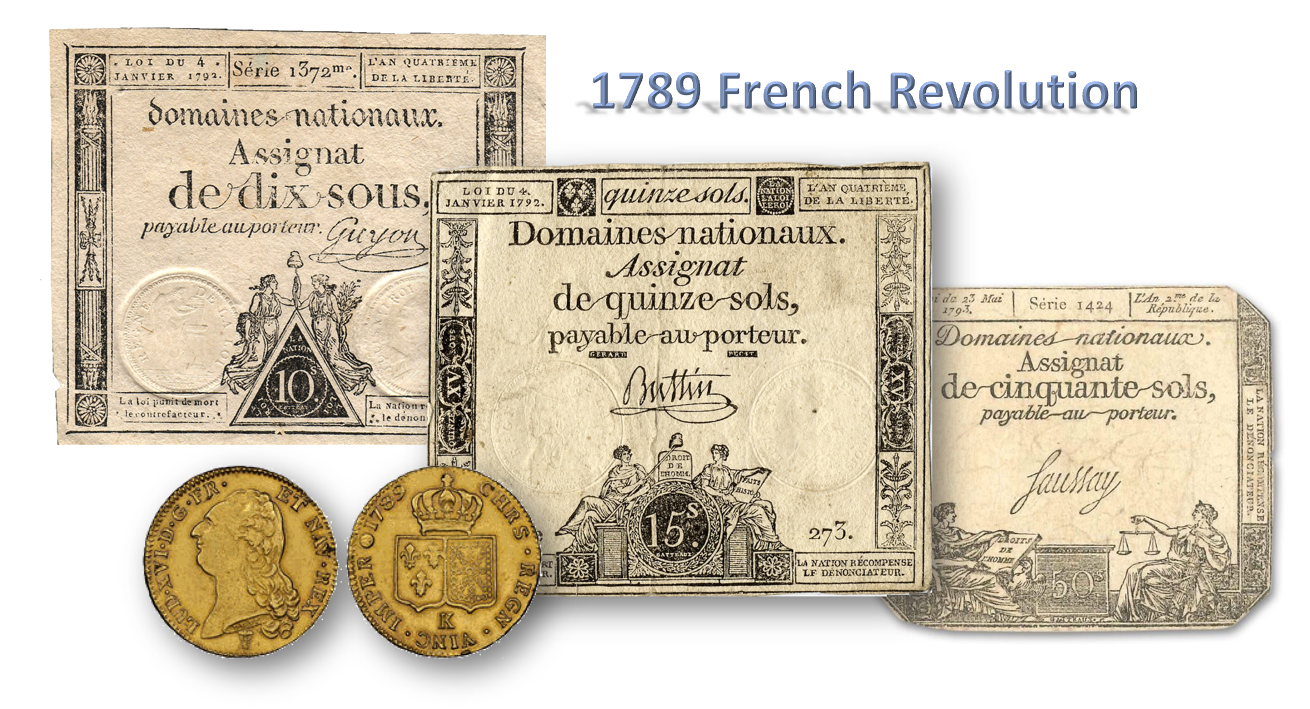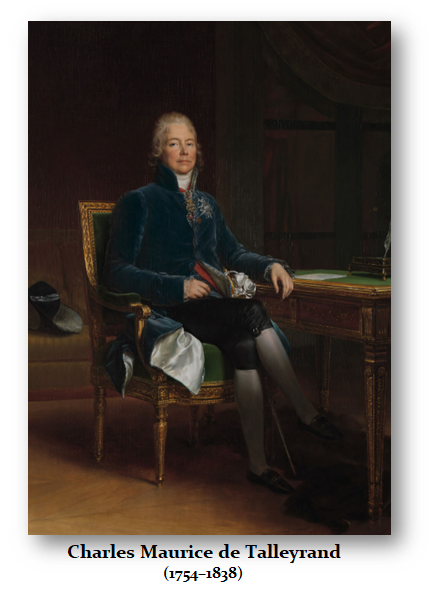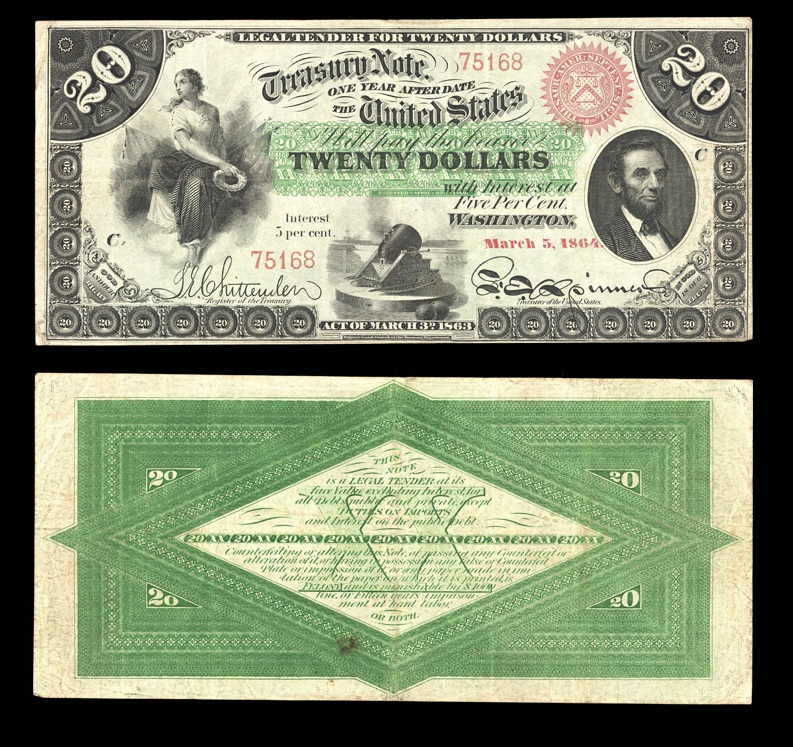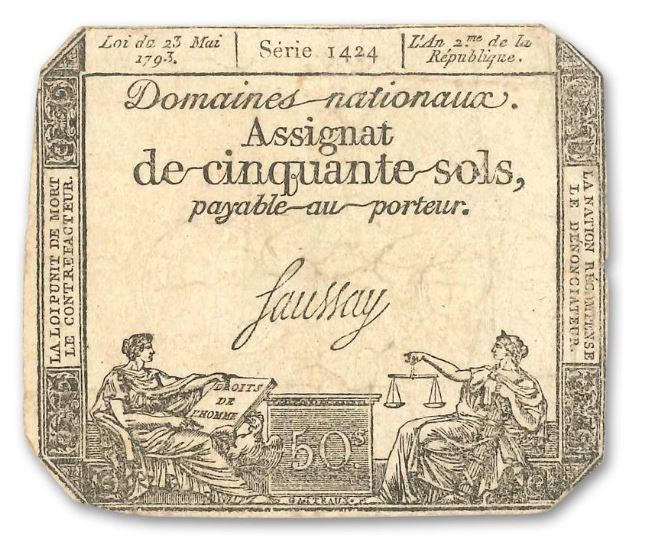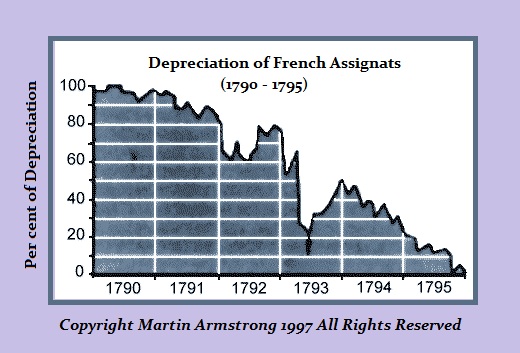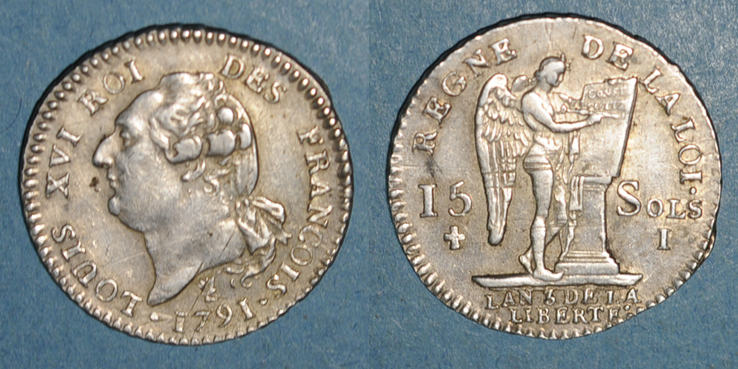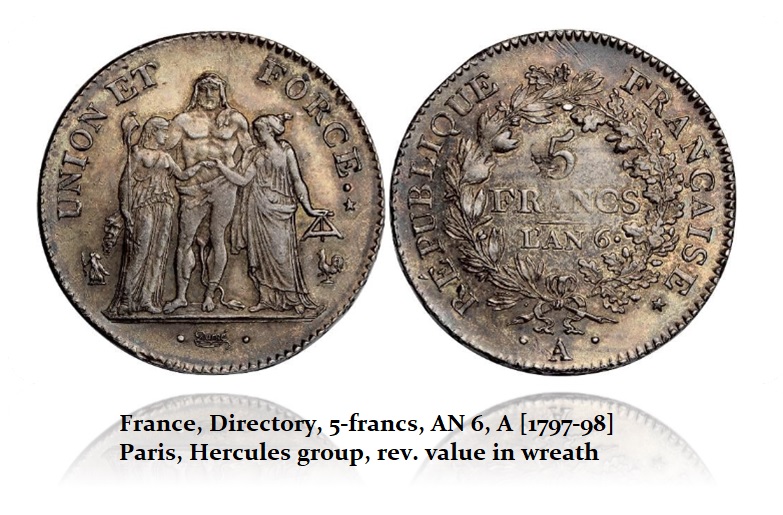Monetary History of
France
The French Revolution erupted out of a major debt crisis thanks to the government’s reckless borrowing. France was threatened with insurmountable debt that brought the economy to its knees. The people were plunged into starvation and revolts began in the countryside. King Louis XVI (1754 – 1793) convened the French Estates-General in order to find a way out of the crisis. The solution was to create the National Constituent Assembly, which was tasked with resolving the public debt. This was the early stages of the French Revolution.
The French tax system of the Ancien Régime was oppressive and it was unequally applied levies were abolished. Charles Maurice de Talleyrand (1754–1838), was the Bishop of Autun who then became a diplomat/politician. He suggested the idea of nationalizing church property with a total value that was estimated at the time between 2 and 3 billion livres. Charles Maurice argued that this land had the potential to pay off the nation’s debt.
Assignat notes were issued from 1790 – 1796 as a brilliant solution to the Debt Crisis. The National Assembly came up with the idea to auction off the land confiscated from the Church but required that it be purchased with the newly created assignats. Of course, the notes could be purchased only with coins. Assignats were initially interest-bearing bonds which probably was the idea behind the first US paper money during the Civil War that paid interest.
These Assignats were issued by the French treasury backed by the value of the national lands which held the mortgages. It was the sale of these assignats that raise hard money for the State but effectively the notes began to circulate as de facto paper currency. The first Assignats were authorized in December 1789 and issued in April 1790 in a tranch of 400 million livres paying 5% interest. They were issued in large denominations of 200, 300, and 1000 livres. They had detachable coupons to collect interest.
The shortage of coins emerged as people hoarded money in times of uncertainty. While the Assignats at first provided some economic stimulus, their high denominations did nothing for small everyday transactions. The next solution was for the Assembly to eliminate the interest rate on the notes and then re-issuing them thus rolling the debt as they do today in modern times. The hoarding coinage resulted in these Assignats becoming the main circulating money supply by September 1790. the Assembly had now issued 800 million livres worth of non-interest-bearing notes on top of the original issue of 400 million. This issue was in small denominations of 50, 60 70, 80, 90, 100, 500, and 2000 livres and were decreed to be legal-tender for all purposes. This issue of small denominations was to provide for the hoarding of coinage. Virtually no coins were to be found in circulation.
With the hoarding of all coinage, the National Assembly attempted to solve this crisis. They issued small-change denominations with the first being just 5 livres in May 1791. As confidence in the government continued to collapse, the Assignats began a steady cycle of depreciation. By the end of 1791, the Assignats were worth about 80% of their face value. The government began to issue more and more of the notes and in 1791 they flooded the economy with over 1.3 billion livres issued between May and the end of 1791. With no coinage to be found, they continued issue Assignats with no end in sight.
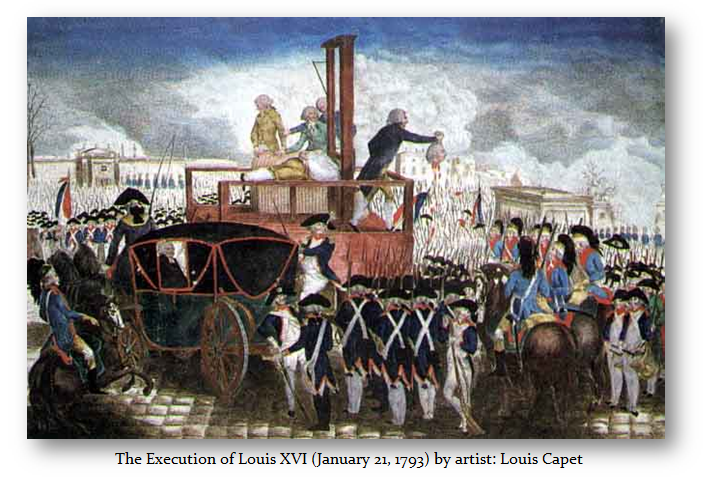 The Assignats are more than just the monetary collapse of France. All of this time, the King was still in power. Then, in June 1791, the king attempted to flee France as the economy was simply imploding. This led to the events that would culminate in his execution terminating the French monarchy. This sent shockwaves throughout Europe. The Assignats mark the transition from Monarchy in October 1791 to Constitutional Monarchy in September 1792 and to the 1st Republic (1792 – 1804).
The Assignats are more than just the monetary collapse of France. All of this time, the King was still in power. Then, in June 1791, the king attempted to flee France as the economy was simply imploding. This led to the events that would culminate in his execution terminating the French monarchy. This sent shockwaves throughout Europe. The Assignats mark the transition from Monarchy in October 1791 to Constitutional Monarchy in September 1792 and to the 1st Republic (1792 – 1804).In 1792, they issue low-value assignats in denominations of 10, 15, 25, and 50 sous to relieve the coin shortage. Then that same year, the French Revolutionary Wars (1792–1802) began which were a series of sweeping military conflicts as Britain, Austria, Prussia, Russia, and several other monarchies sought retribution for overthrowing the French Monarchy. This only further increased the inflation in France and the creation of the First Republic with the Reign of Terror (September 5th, 1793–July 27th, 1794) which was a series of massacres and numerous public executions that took place in response to anti-Monarchy, anticlerical sentiment, and accusations of treason by the Committee of Public Safety for anyone who lamented the passing of the king.
These events completely demolished any value of the Assignats. By the end of their circulating period, assignats were worth only ¼ of 1 percent of their face value! The total face value issues of the Assignats had reached 45 billion livres by 1796 making them virtually worthless. They symbolically even destroyed the plates in February 1796. Nonetheless, the Assignats initially enabled some French peasants a means of purchasing land that they normally would never have an opportunity to acquire.
The Assignat replacement was short-lived known as the Mandat Territorial (land warrant) notes which lacked any confidence among the people and quickly failed. The confidence of the French people began to rise when the French armies were successful in battles. This allowed for the reintroduction of metallic currency in 1797. Note that the image used was that of Hercules and the date is expressed as the year of the new government. They rejected anything that referred to religion and that would be the date system.

